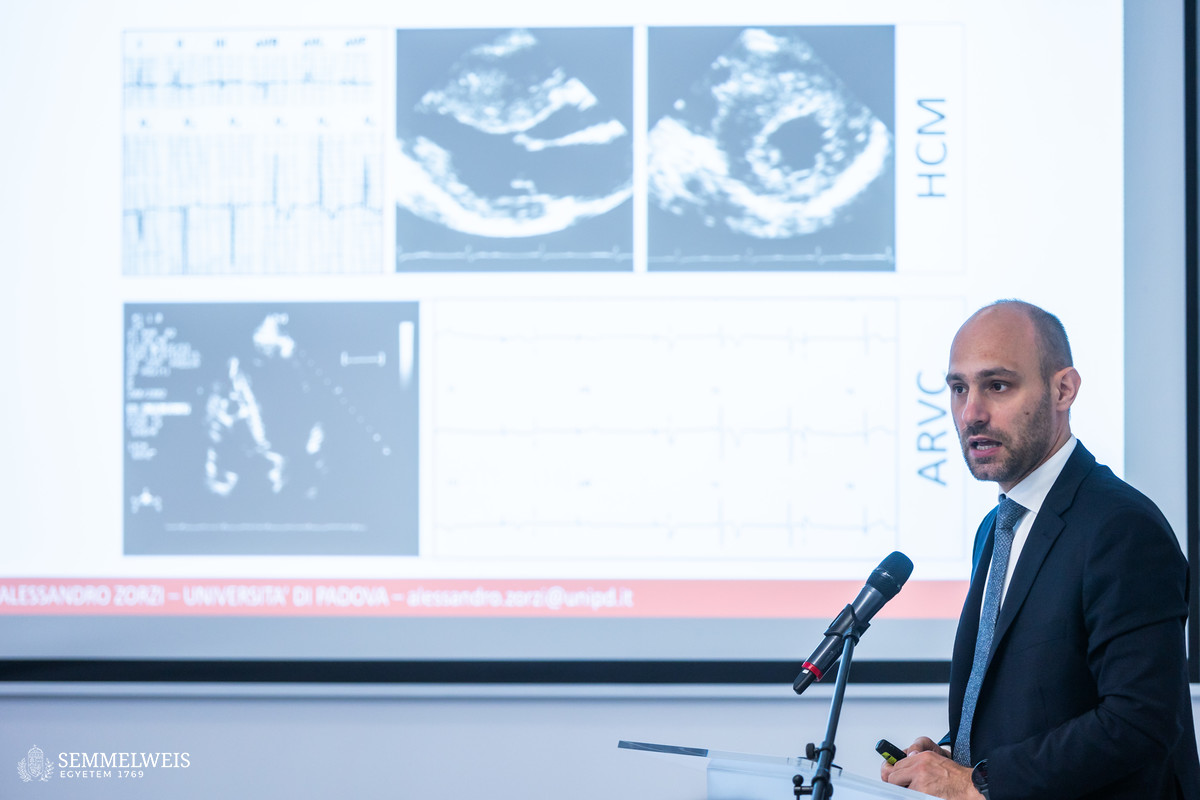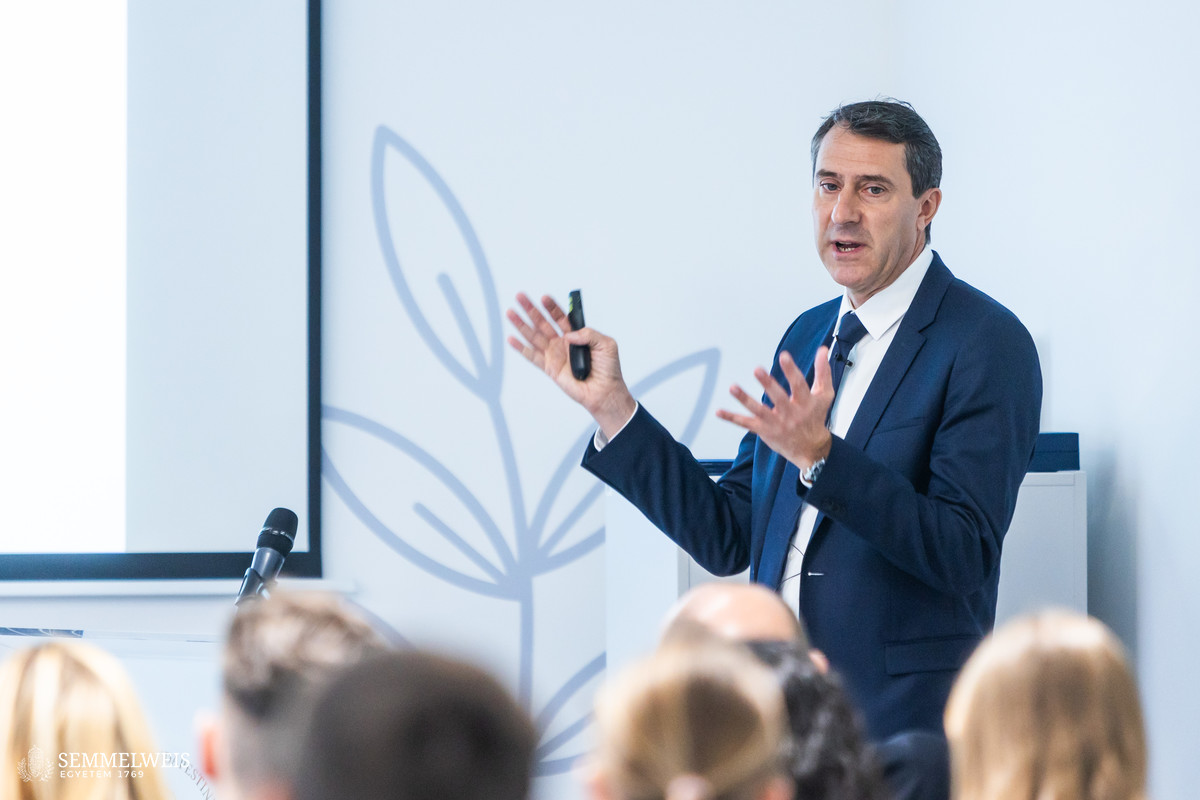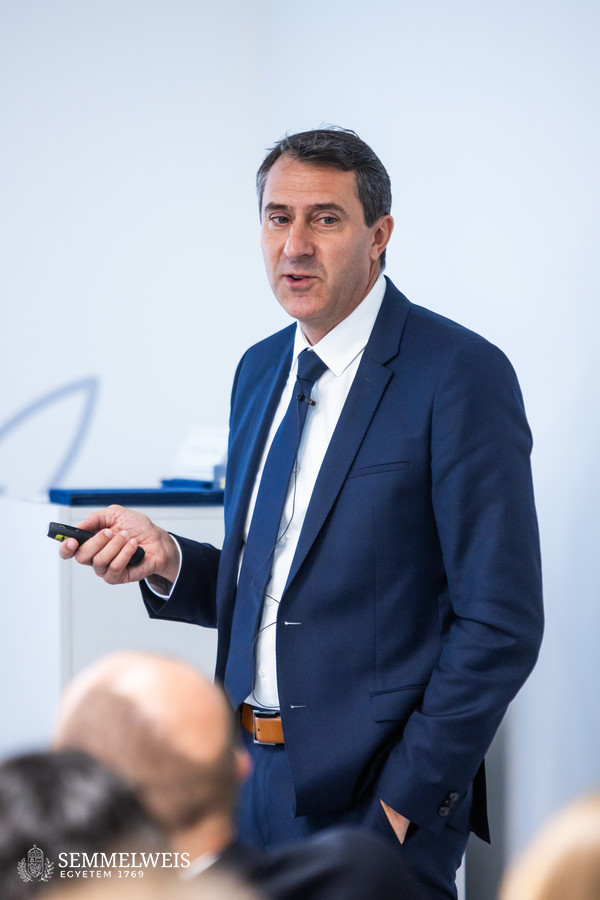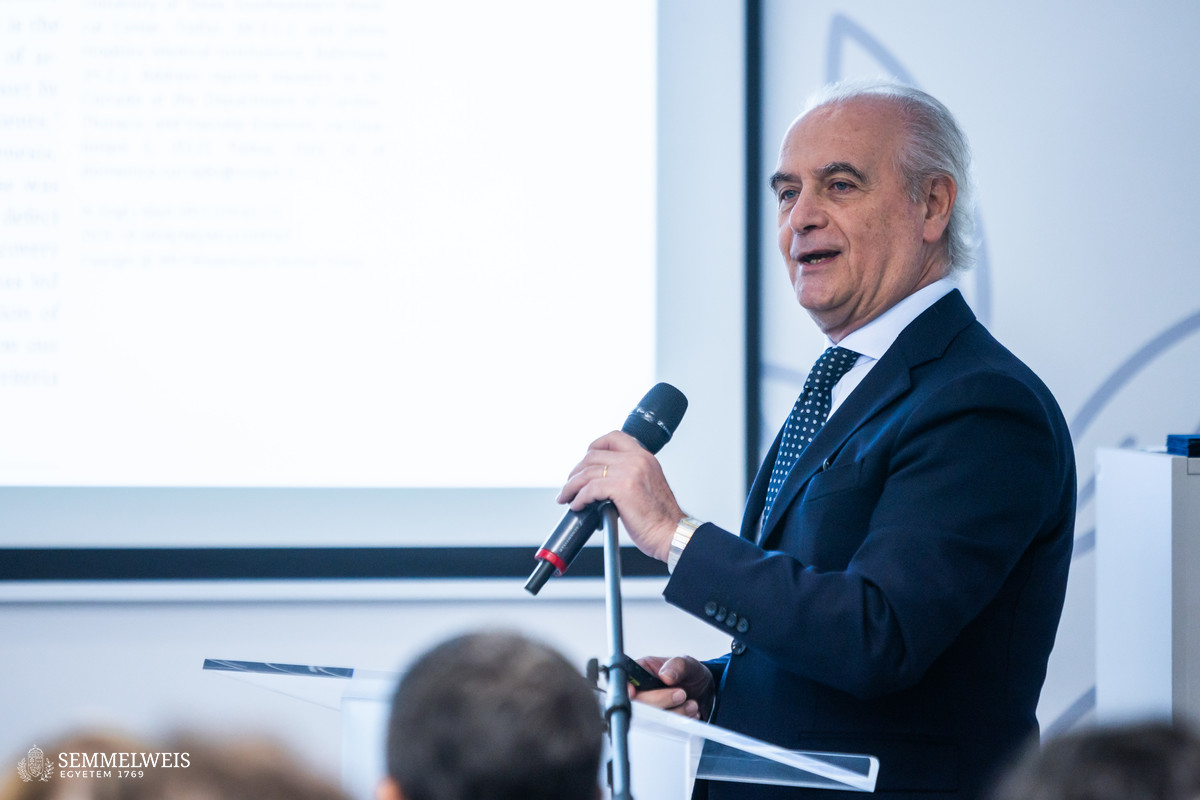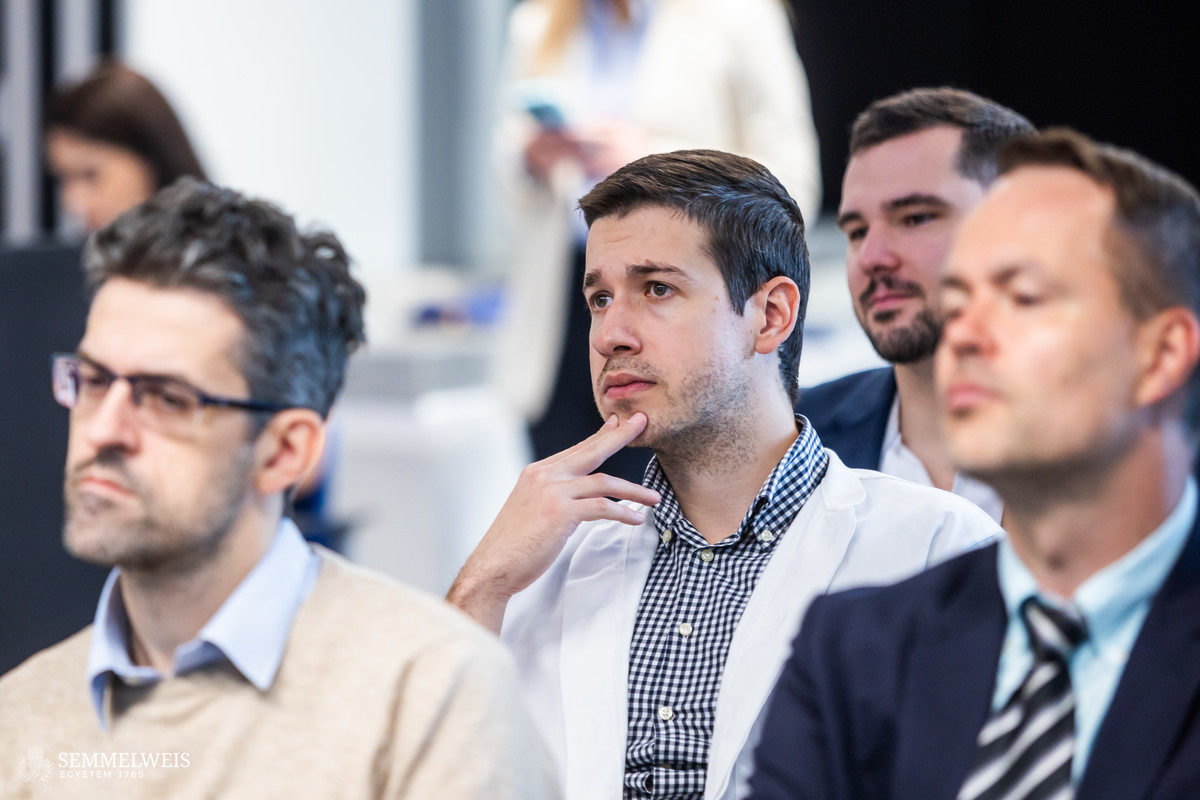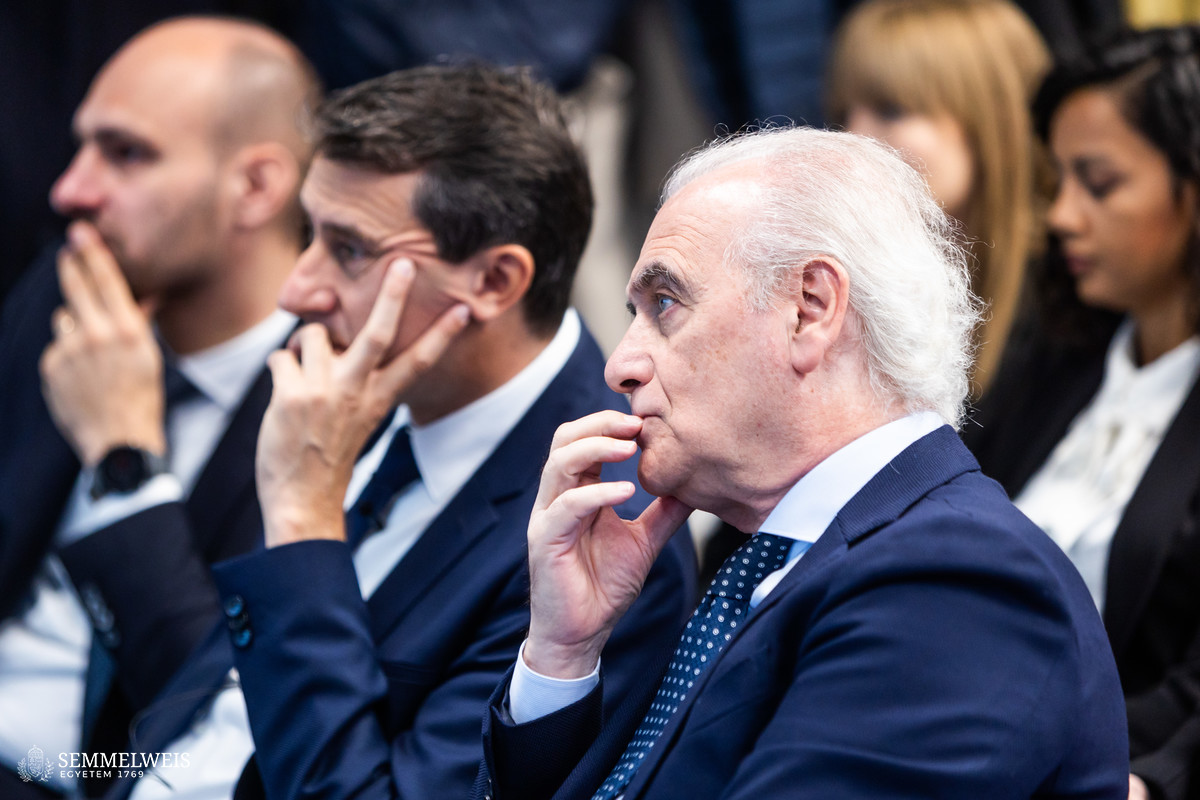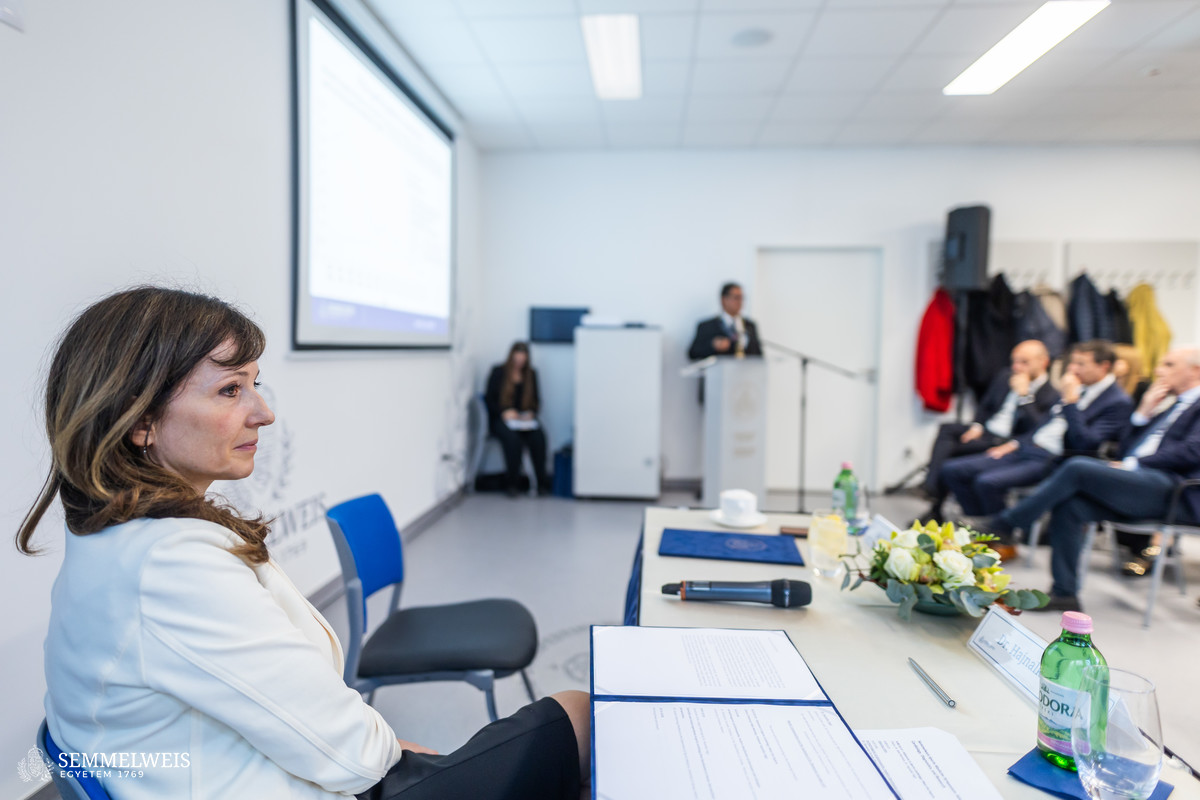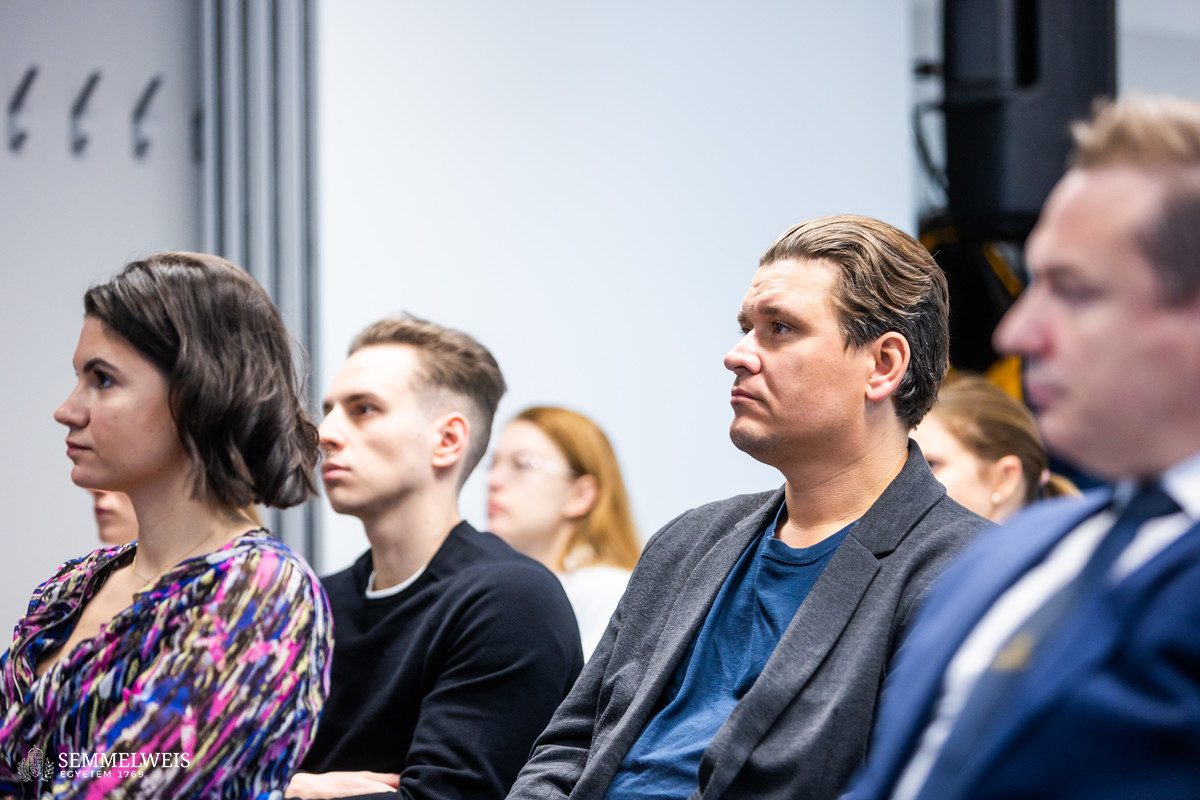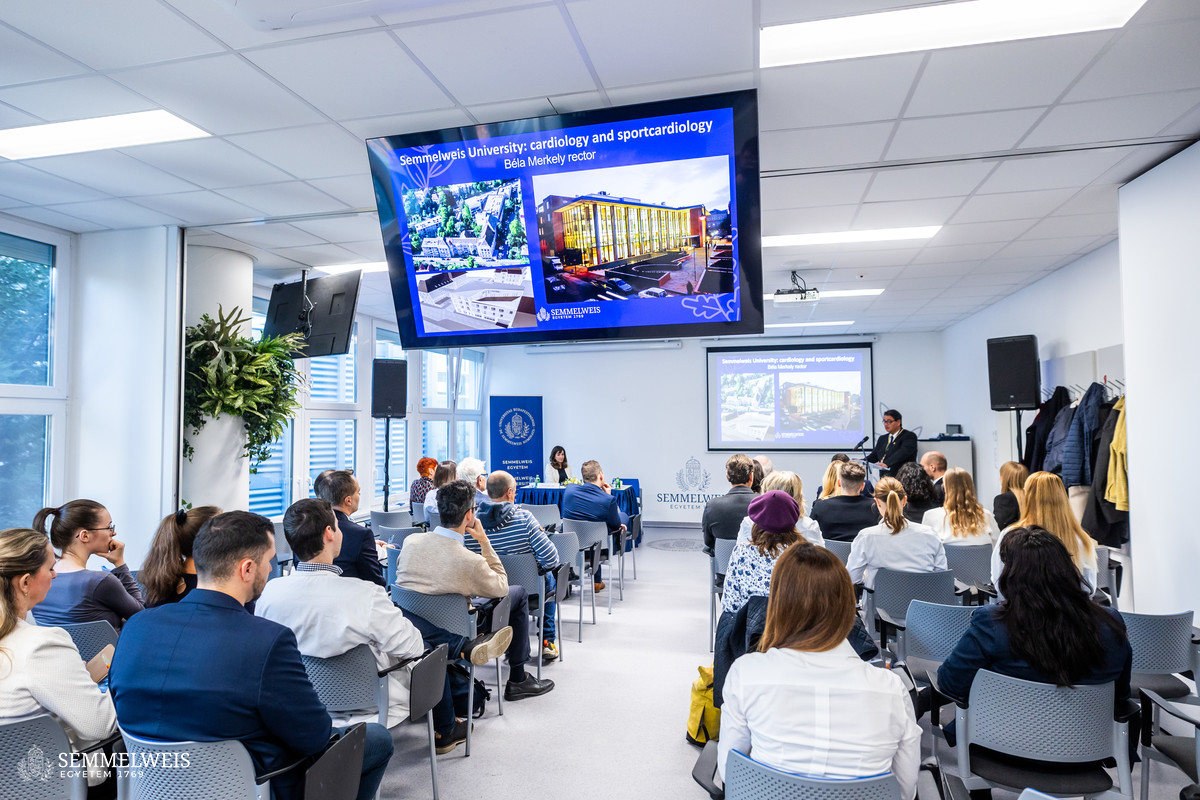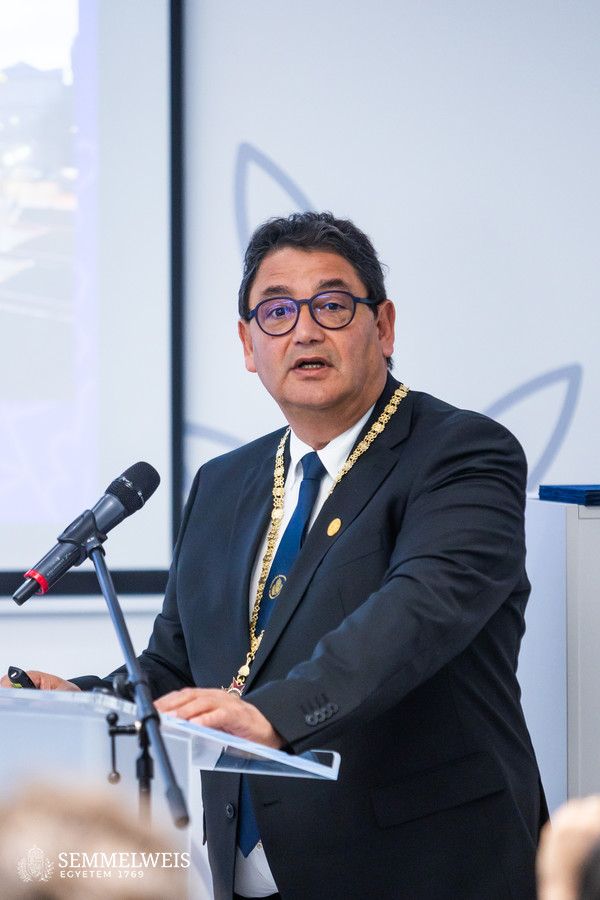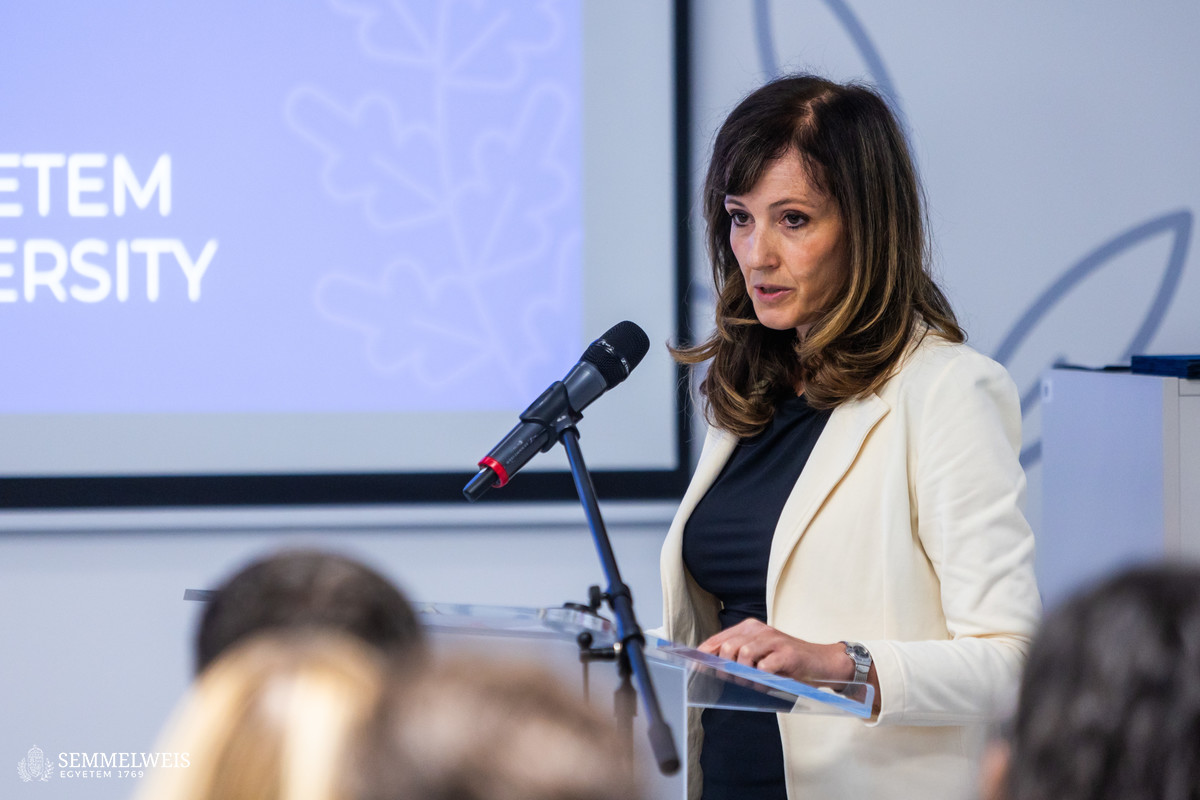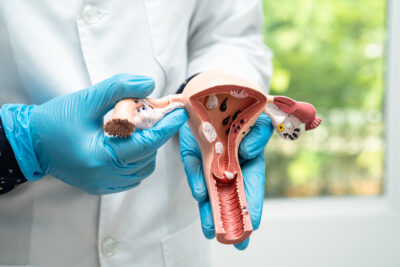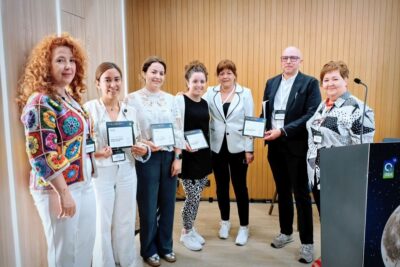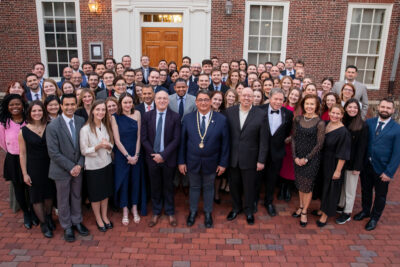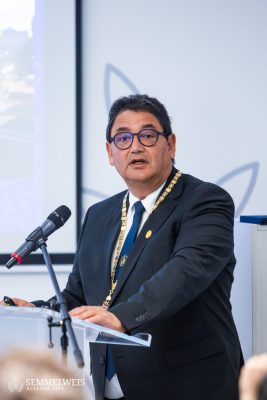 Opening the presentation series, Dr. Béla Merkely, Rector of Semmelweis University, said in his welcome speech that the Városmajor Heart and Vascular Center has been providing sports cardiology services within the framework of the Department of Sports Medicine since 2018, which conducts medical examinations of approximately 1,500 athletes annually. Sports medicine education has also become an integral part of the university curriculum. On June 1, 2023, a new sports cardiology clinic was opened with the professional leadership of Dr. Hajnalka Vágó, and which enables a larger number and extended tests of athletes to be carried out. „We are proud of our sports cardiology achievement. Our colleagues also play an active role in providing medical care for sports events both in Hungarian competitions and for Hungarian teams playing abroad,” said in his speech Dr. Béla Merkely. In connection with the presentation on the university and the Városmajor Heart and Vascular Center, the rector also mentioned that the center is among the top 50 cardiology institutions in the world.
Opening the presentation series, Dr. Béla Merkely, Rector of Semmelweis University, said in his welcome speech that the Városmajor Heart and Vascular Center has been providing sports cardiology services within the framework of the Department of Sports Medicine since 2018, which conducts medical examinations of approximately 1,500 athletes annually. Sports medicine education has also become an integral part of the university curriculum. On June 1, 2023, a new sports cardiology clinic was opened with the professional leadership of Dr. Hajnalka Vágó, and which enables a larger number and extended tests of athletes to be carried out. „We are proud of our sports cardiology achievement. Our colleagues also play an active role in providing medical care for sports events both in Hungarian competitions and for Hungarian teams playing abroad,” said in his speech Dr. Béla Merkely. In connection with the presentation on the university and the Városmajor Heart and Vascular Center, the rector also mentioned that the center is among the top 50 cardiology institutions in the world.
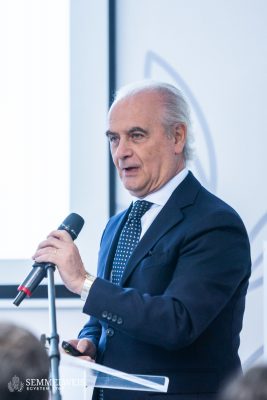 The first professional lecture was given by Dr. Domenico Corrado from the University of Padua, who talked about the modern classifications of phenotypes and etiologies of arrhythmogenic cardiomyopathy. The conference continued with the presentation of Dr. Jürgen Scharhag, a Specialist from the Department of Sports Medicine of the University of Vienna, who is experienced in German and Austrian sports cardiology research alike. Dr. Scharhag presented on the experiences and conclusions of clinical research and practice. The University of Padua was also represented by Dr. Alessandro Zorzi, who investigated the incidence of ventricular extrasystole in athletes. Dr. Francesca Graziano, currently a medical candidate in Padova and also Dr. Hajnalka Vágó’s PhD student, presented his results on sudden cardiac death in children.
The first professional lecture was given by Dr. Domenico Corrado from the University of Padua, who talked about the modern classifications of phenotypes and etiologies of arrhythmogenic cardiomyopathy. The conference continued with the presentation of Dr. Jürgen Scharhag, a Specialist from the Department of Sports Medicine of the University of Vienna, who is experienced in German and Austrian sports cardiology research alike. Dr. Scharhag presented on the experiences and conclusions of clinical research and practice. The University of Padua was also represented by Dr. Alessandro Zorzi, who investigated the incidence of ventricular extrasystole in athletes. Dr. Francesca Graziano, currently a medical candidate in Padova and also Dr. Hajnalka Vágó’s PhD student, presented his results on sudden cardiac death in children.
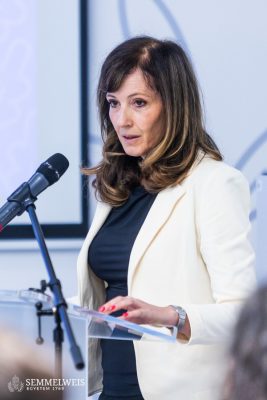 Among the Hungarian lecturers were the excellences of the field from the country. Dr. Hajnalka Vágó spoke about the most common structural heart muscle diseases among domestic athletes and how they can be distinguished from the physiological sports heart. Dr. Csaba Bödör, Head of the Molecular Oncohematology Research Group of the Institute of Pathology and Experimental Cancer Research at Semmelweis University, discussed the genetic background of cardiovascular diseases in athletes. As revealed in his presentation, in many cases genetic markers can predict the occurrence of diseases with a good chance, but there are also cases when no genetic predisposition can be detected, however, the athlete in question still suffers from some kind of heart problem. Dr. Liliána Szabó, who in addition to Semmelweis also represented the Queen Mary University of London, analyzed cardiovascular adaptation in the framework of a large cohort study, using a comprehensive CMR examination.
Among the Hungarian lecturers were the excellences of the field from the country. Dr. Hajnalka Vágó spoke about the most common structural heart muscle diseases among domestic athletes and how they can be distinguished from the physiological sports heart. Dr. Csaba Bödör, Head of the Molecular Oncohematology Research Group of the Institute of Pathology and Experimental Cancer Research at Semmelweis University, discussed the genetic background of cardiovascular diseases in athletes. As revealed in his presentation, in many cases genetic markers can predict the occurrence of diseases with a good chance, but there are also cases when no genetic predisposition can be detected, however, the athlete in question still suffers from some kind of heart problem. Dr. Liliána Szabó, who in addition to Semmelweis also represented the Queen Mary University of London, analyzed cardiovascular adaptation in the framework of a large cohort study, using a comprehensive CMR examination.
“The symposium was organized for the first time by the Department of Sports Medicine of Semmelweis University, and we would like to hold more similar symposia in the coming period, touching on other areas of sports medicine as well. On a national level, this was perhaps the first international clinical sports cardiology symposium at which several renowned experts from several universities gave their presentations,” said Dr. Hajnalka Vágó, the Head of the Department of Sports Medicine and the organizer of the event, then she added: “The symposium was an excellent opportunity for the further training of domestic specialists, and the event also made it possible to prepare scientific collaborations. Regarding the latter, we plan to sign a scientific and educational collaboration in the coming period.”
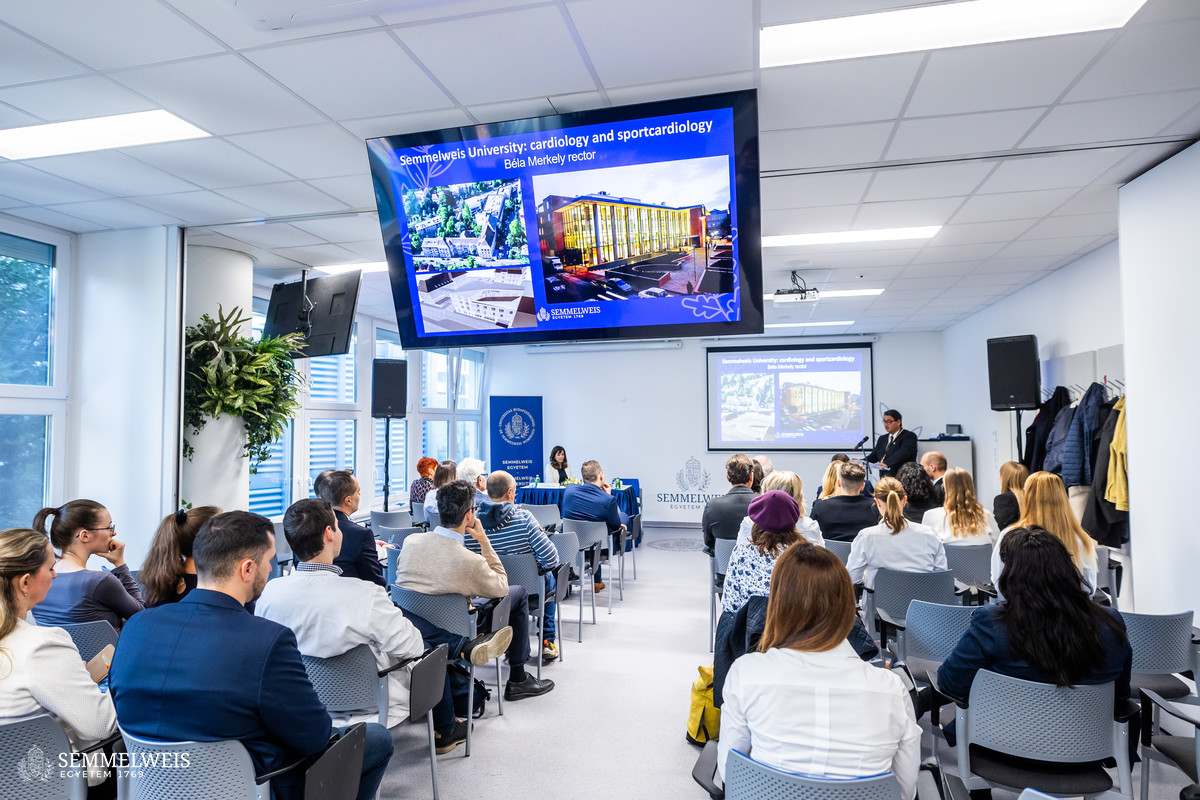
Thirteen speakers participated in the one-day symposium, and an audience of about 80 people took part in the event mainly on behalf of the Hungarian Society of Cardiologists and the Hungarian Sports Medicine Society, and other doctors from the Városmajor Heart and Vascular Center and Semmelweis University were also in the audience. The event took place within the framework of the TKP2021-NKTA-46 project, with support from the National Research Development and Innovation Fund of the Hungarian Ministry of Innovation and Technology, and with financing from the TKP2021-NKTA tender program.
Mária Sánta
Photo: Bálint Barta – Semmelweis University
